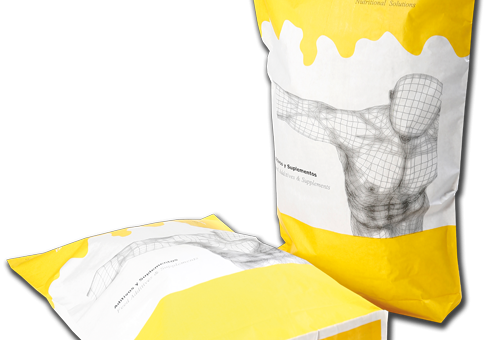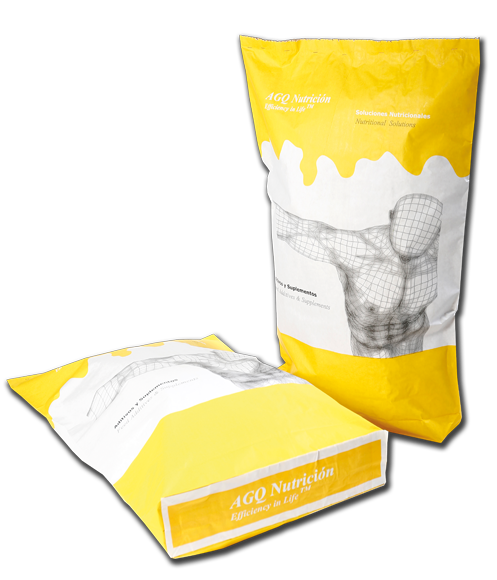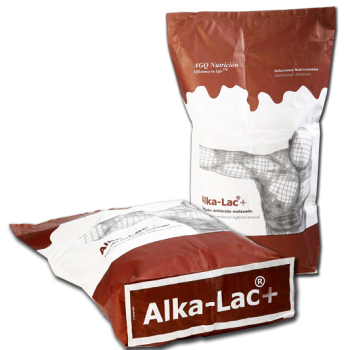
NovoSophos®
NovoSophos®
Protected tributyrin for superior performance
The impact of butyrate in livestock nutrition is nothing short of revolutionary, offering many benefits beyond the initial ROI, mortality rates, and Feed Conversion Ratios (FCR) improvements. Its versatility makes it suitable for many species, contributing to healthier animals and more efficient feed utilization.
NovoSophos® is a pioneering tributyrin-based butyrate solution, known for its odorless, stable, and user-friendly attributes. It sets industry standards for performance and ease of use.
Specifications

Benefits
Balanced Gut Microbiota
A well-balanced gut microbiota is pivotal for livestock. Butyrate, as a postbiotic, serves as a trophic factor in gut lining renewal. It strengthens tight junctions between cells, fostering an environment where beneficial bacteria thrive while inhibiting harmful pathogens. This equilibrium leads to enhanced gut health, ensuring improved livestock performance and overall profitability.
Benefit
- Butyrate as a trophic factor for gut lining renewal.
- Strengthening tight junctions for enhanced gut health.
- Fostering a balanced microbiota for improved livestock performance.
Nutrient Absorption
Butyrate, a nutritional linchpin, activates critical exocrine enzymes, propelling efficient digestion and nutrient absorption. Over three decades of widespread use, butyrate consistently enhances weight gains, lowers feed consumption, and reduces Feed Conversion Ratios (FCR). Particularly, in feeds with less digestible proteins, butyrate significantly improves protein utilization.
- Enhanced nutrient absorption and efficient digestion
- Consistent better weight gains, lower feed consumption, and improved FCR
- Especially valuable in feeds with less digestible proteins
Immune Support
Butyrate plays a vital role in bolstering immunity. It takes on common gram-positive and gram-negative pathogens through both direct action and indirect means. Indirectly, it promotes a favorable microbiota balance and boosts the endogenous production of AMP/HDP (Antimicrobial Peptides/Host Defense Peptides). This dual approach equips livestock with robust immune defenses, reducing susceptibility to diseases and reinforcing overall well-being
- Butyrate combats pathogens directly and indirectly, promoting immunity in livestock.
- Balances microbiota and boosts AMP/HDP production for robust host defense.
- Reduces disease susceptibility, reinforcing overall well-being in livestock.
NovoSophos Technology
Tributyrin takes the lead as the most bioavailable form of butyrate, surpassing other butyrate salts due to its higher butyrate concentration. Unlike coated products, Tributyrin eliminates the need for non-active fats that merely add weight without enhancing activity. This results in a more efficient delivery system, ensuring that a greater quantity of pure butyrate reaches the target site – the intestine. With Tributyrin, you get superior payloads and effectiveness without unnecessary additives, making it the optimal choice for maximizing the benefits of butyrate in livestock nutrition. It’s a streamlined solution that optimizes performance while minimizing unnecessary components, setting it apart as the superior option in livestock feed additives.
Tributyrin stands as the ultimate Protected Butyrate for Targeted Release, consistently outperforming butyrate salts or coated salts in livestock performance. It often requires lower dosages per metric ton of feed. Its unique composition ensures efficient release in the intestine and enhanced absorption by gut cells, optimizing benefits and cost-effectiveness. Tributyrin stands out as the top choice for enhancing livestock health and profitability, offering a reliable and efficient solution in livestock nutrition.
NovoSophos emerges as the ideal butyrate solution for the entire industry chain, from manufacturing and transport to handling and feed production. NovoSophos’ Tributyrin is odour-free, unlike butyrate salts, notorious for their persistent, off-putting odour that clings to skin, hair, and clothing. This crucial distinction alleviates worker discomfort and boosts morale, preventing potential labour disputes. With NovoSophos, the workforce can confidently handle this critical product, unlocking its extraordinary benefits for animals, feed, and operational profitability. Tributyrin enhances livestock performance and fosters a more harmonious and productive work environment, ensuring a seamless journey from production to end-use.
Butyrate
87%Bypass
80%Odour
10%Key Scientific Excerpts
"In Greek dairy herds, the prevalence of SARA was found to be 16% in cows with rumen pH ≤5.5. Factors like feeding regime, particle length size, ration composition, and housing type significantly influenced the presence of SARA"
SARA prevalence in Greece,
Kitkas, Valergakis, Karatzias & Panousis, 2013"Subacute ruminal acidosis (SARA) in dairy cattle is linked with reduced efficiency of milk production, impaired cow health, and high rates of involuntary culling. It may be associated with liver and lung abscesses, laminitis, and reduced ruminal efficiency"
Subacute ruminal acidosis health effects,
Hussain, Amjad-ul-Islam & Gupta, 2011"The prevalence of subacute ruminal acidosis in European dairy herds is around 20%, generating annual losses in the United States of approximately USD 500 million to 1 billion"
SARA Prevalence Europe,
Kovács et al., 2020"Subacute ruminal acidosis (SARA) prevalence in grazing Irish dairy cattle fed predominantly perennial rye grass-based pasture was found to be 11%, with 42% marginal and 47% normal. This raises concerns regarding effective pasture utilization and potential consequences for animal health"
SARA Prevalence,
O’Grady, Doherty & Mulligan, 2008"Subacute ruminal acidosis (SARA) is a common condition in well-managed dairy cattle herds due to high grain and low fibre diets, leading to ruminal fermentation disorders and negatively impacting production performance and farm economy."
Economic Impact of SARA,
Mathew & Ajithkumar, 2014"Ketosis reaches a prevalence of 20% during early postpartum, with economic losses estimated up to €250 per case/year, doubling if associated diseases are considered"
Ketosis prevalence,
(Lei & Simões, 2021)"The overall prevalence of subclinical ketosis in European dairy farms was 21.8%, with cows having 1.5, 9.5, and 5.0 times greater odds of developing metritis, clinical ketosis, and displaced abomasum, respectively"
Prevalence of Subclinical Ketosis,
(Suthar et al., 2013)"Analysis of over 1 million test day records showed the highest decrease in daily milk yield due to subclinical ketosis was 4.21 kg/day in first-parity cows and 3.72 kg/day in cows with more than four lactations" (Gantner et al., 2016).
NEB effect on Milk Yield,
"In Western European dairy herds, the prevalence of ketosis was 39%, with significant variation among countries. Management systems and fresh cow clinical conditions were identified as associated factors" (Berge & Vertenten, 2014).
Prevalence of Ketosis in Europe,
The overall prevalence of subclinical ketosis (SCK) in European dairy farms was 21.8%, with cows having 1.5, 9.5, and 5.0 times greater odds of developing metritis, clinical ketosis, and displaced abomasum, respectively. (Suthar et al., 2013).
Prevalence in Ketosis,
"Sub-acute ruminal acidosis (SARA) is a significant metabolic disease affecting high-producing dairy cows. SARA leads to reduced milk fat and protein production, increased veterinary costs, and a higher risk of culling."
SubAcute Rumen Acidosis Effects,
Khafipour et al., 2009With regard to fertility to AI, there is a strong positive association between early commencement of postpartum ovulatory cycles and subsequent pregnancy, ensures a good start to lactation, increasing feed efficiency and milk production, particularly during heat stress
NEB on Reproduction of Dairy Cows,
(Butler, 2000; Galvao et al., 2010)With regard to fertility to AI, there is a strong positive association between early commencement of postpartum ovulatory cycles and subsequent pregnancy (Butler, 2000; Galvao et al., 2010). This important relationship has focused research attention on the regulation and re-initiation of ovarian activity and ovulatory cycles in early lactation prior to the breeding period. Energy balance, re-initiation of ovarian activity, and metabolic health status are inter-connected in transition cows.

